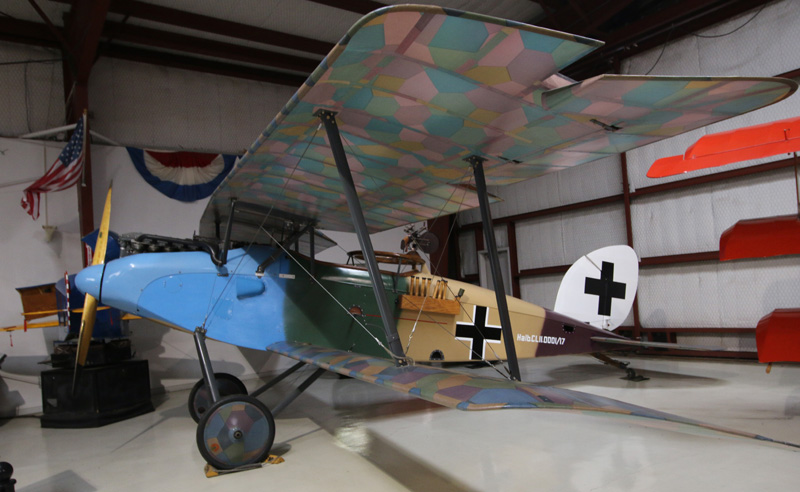| Halberstadt | ||||||||||||||||||||||
|
CL.II # |
||||||||||||||||||||||
 |
||||||||||||||||||||||
|
Photo: Robert Deering
5/27/2017 Cavanaugh Flight Museum Addison Airport (ADS) Addison, Texas |
||||||||||||||||||||||
|
The Halberstadt CL.II was a German two-seat escort fighter/ground attack aircraft of World War I. It entered service in August 1917, and proved extremely successful, its excellent manoeuvrability, rate of climb and good field of fire for its armament allowing it to match opposing single-seat fighters. It also proved to be well suited to close-support, which became the primary role of the CL-type aircraft, the units operating them being re-designated Schlachtstaffeln (Battle flights). Ground support by the Schlachtstaffeln proved very effective, being used both in support of German attacks and to disrupt enemy attacks. An early example of the successful use of CL type aircraft in the ground attack role was during the German counterattack on 30 November 1917 during the Battle of Cambrai, where they were a major factor in the German performance. The success of the German tactics at Cambrai, including the use of close air support, resulted in the Germans assembling large numbers of CL-types in support of the Spring Offensive in March 1918, with 38 Schlachtstaffeln (equipped with the CL.II, CL.IV and the Hannover CL.III available, of which 27 were deployed against the British forces during the initial attack Operation Michael. The CL.II continued in service until the end of the War. |
||||||||||||||||||||||
|
||||||||||||||||||||||
